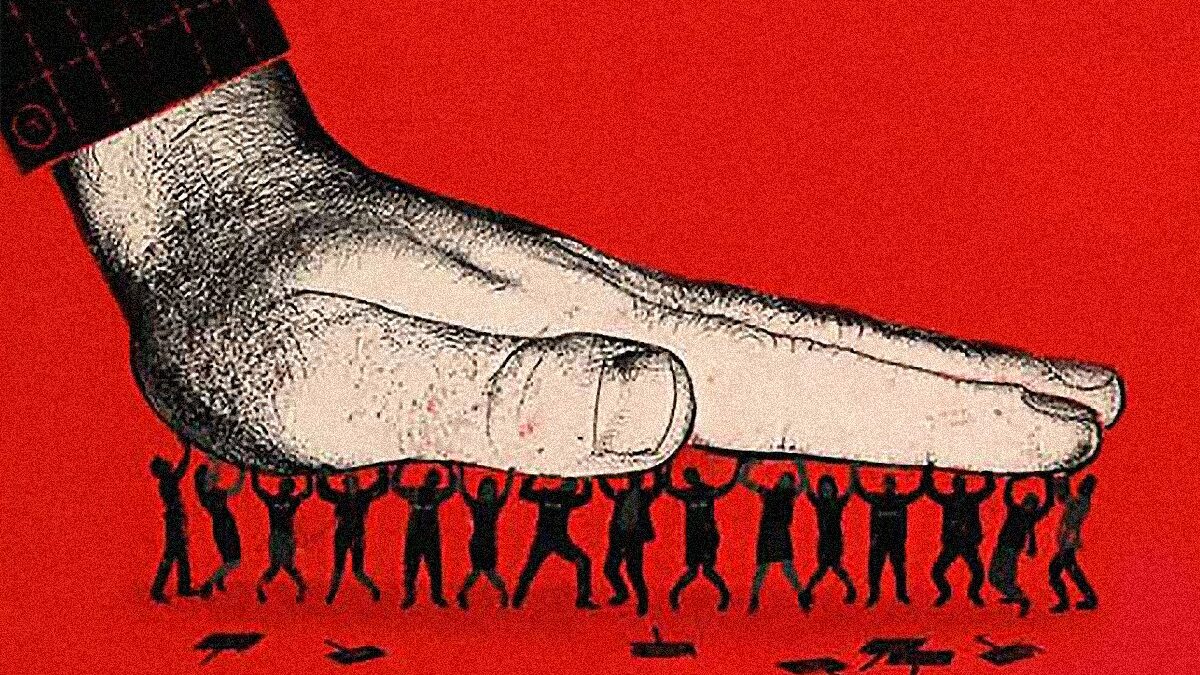How Autocracies Fall? 4 Books on Autocratic Regimes and How They Work
In the past few years, there has been a lot of talk about the end of democracy. For this purpose we collected the most important books on autocracies to learn more about this global issue.
It seems that every day, another country is electing a leader who promises to return their nation to its former glory. However, this glory never happens and history has shown us time and again that these power hungry autocracies doesn't work in long run.
Based on the research of Freedom House currently a huge amount of countries are struggling with freedom and the lack of democracy worldwide. On their map the purple and yellow countries are listed as “Not Free” and “Partly Free” which means in these countries anti democratic parties and leadership is present.

In the last decade we experienced an intense drop in democracy worldwide, more and more countries fall under the term of “hybrid” or “transitional” regimes. Even in the European Union where the strength of democracy significantly rise in the last 40 years. Not anymore. Hybrid regimes like Hungary and Poland appeared in the last 10 years, just from the nowhere.
The situation of democracy in Africa and Asia doesn't changed significantly. One of a recent report of International Idea Institute shows that the situation in China and Post-Soviet countries doesn't changed a lot.
We cannot forsee the future impacts of Ukrainian-Russian War on democracy, but we know from recent events, that the gas crisis and global decline of economy will shake up the far right parties in most countries.
Now back to autocracies.
What Kind of Autocracies Exists?
- Hybrid autocracy or hybrid regime – which combine autocratic attributes with democratic, they use electoral authoritarianism to legitimate their power, but controls the thoughts of ordinary people
- One-party regime – where only one party rules the country and protects the unity of the nation
- Dictatorship – where a single leader decides or have direct control over the whole decisional making and ruling process
How Autocracy Works? What Are the Attributes of Autocratic Leadership?
In an autocratic leadership style, the leader has absolute power and control over the decision-making process.
How can we identify autocratic regimes? What are the characteristics?
- (Media control) The regime controls the majority of the media outlets including TV channels, newspapers and even online presence (websites and social media)
- (Intimidation) Autocratic regimes often intimidate certain group of people within the country (opposing parties, journalists, teachers etc.) and they limit or refuse their free speech
- They legitimate their power with formal or distorted elections, where the rules of the election, media power
- (Judicial Issues) The justice system and the judges of the country isn't free from power. The autocratic party or leader may influence the outcome of certain
- (Oligarchs) The autocratic power or government centralizes wealth around related oligarchs who make their fortunes at an extraordinary pace
- (Failures of Rationalism) The future strategical vision of the ruling party is distort
- (Segregation) Continuous isolation from regional countries both in terms of political ideas and economical
Now let's check some of the most relevant books on autocracies, most of them are non-fiction, but there is one relevant classic fiction in the list.
What Are The Best Books on Autocracy?

The Revenge of Power: How Autocrats Are Reinventing Politics for the 21st Century, by Moisés Naím (2022)
Russia's invasion of Ukraine has once again brought the debate between democracies and autocrats to the forefront. Between the ideas of freedom and self-determination of peoples versus state control and the oppression of citizens.
This contrast of ideas and forms of government is impacting the geopolitical order, but also the future of economic globalization manifested in commercial integration and global production chains.
The Revenge of Power is the explanation of what has happened since his previous work The End of Power, where he detailed how the institutional power consolidated after the WWII was being diluted and fragmented into thousands of new institutions.

Surviving Autocracy, by Masha Gessen (2020)
The book is about the autocratic behavior of the Trump administration. The author details the many ways in which ex-president Trump has attempted to subvert democracy in the United States.
Gessen argues that the language of liberal democracy can no longer describe what we truly experience. Trump alters words and renders them meaningless, this is how “fake news” created.
Despite these challenges, Masha remains optimistic about the future of American democracy, pointing to the resilience of our institutions and the strength of Democratic Party.

How Democracies Die, by Steven Levitsky and Daniel Ziblatt (2019)
A democracy does not die overnight. It is a slow process that happens over time when people become apathetic and stop caring about their government or when the government becomes so corrupt that it no longer represents the people.
There are many lessons that history can teach us about how a democracy can die and what we can do to save our own. The most important lesson is that we must be vigilant in our fight for democracy. We cannot take it for granted or assume that it will always be there.
We must participate in our government and hold our leaders accountable. If we see something happening that we don’t agree with, we have to speak up and fight for change.
In this book Steven Levitsky and Daniel Ziblatt explain why democracy may fail in certain environments, how leaders may undermine it, and what we can do to help protect it.

Animal Farm (fiction), by George Orwell (1945)
Even while reading 1984, I thought Orwell was a genius, but Animal Farm proves this even more in my eyes. Building up a fiction autocracy in this world in such a precise way, where every step has a logical consequence and everything is explainable.
After all, what is needed for a total dictatorship? The book shows the recipe, which can be extracted from only 150 pages. You need a good orator who builds a suitable bodyguard around himself from members who have been brought up from birth and therefore can be influenced, and who is smart in every way. The leader should know when to do what, when to trample whom. When do people need a “circus” and what kind of theoretical needs do people have.
This whole story is based on the human stupidity, which we clearly experiencing in 2020s. People could be fooled till it's too late to rise against the power.
How Autocracies Fall?
Now let's see the final and the main question. While some regimes end abruptly, others may show signs of weakening before they eventually crumble. Here are some common signs of when and how autocratic regimes fall apart:
- Increased opposition from within the ruling elite (Sign: members of the ruling class begin to openly challenge the leaders opinion)
- The inefficient economic system collapses and pushes their inhabitants into poverty (Sign: hyperinflation)
- Revolution implied usually because of poverty or an irrational aggressive policy change of the ruling party or leader
Final Thoughts about Autocracies
As the above books on autocracies show this isn't a new phenomenon, and they are certainly not limited to any one region or country.
They have existed throughout history, and while they may seem to offer stability in the short-term, they are often unstable and can lead to disastrous consequences.
The problem is that we know limited examples from our history where autocratic countries shifted into real democracies in a peaceful way.
If you are interested into thinking about the world check also our book selection about social issues.
My profession is online marketing and development (10+ years experience), check my latest mobile app called Upcoming or my Chrome extensions for ChatGPT. But my real passion is reading books both fiction and non-fiction. I have several favorite authors like James Redfield or Daniel Keyes. If I read a book I always want to find the best part of it, every book has its unique value.







